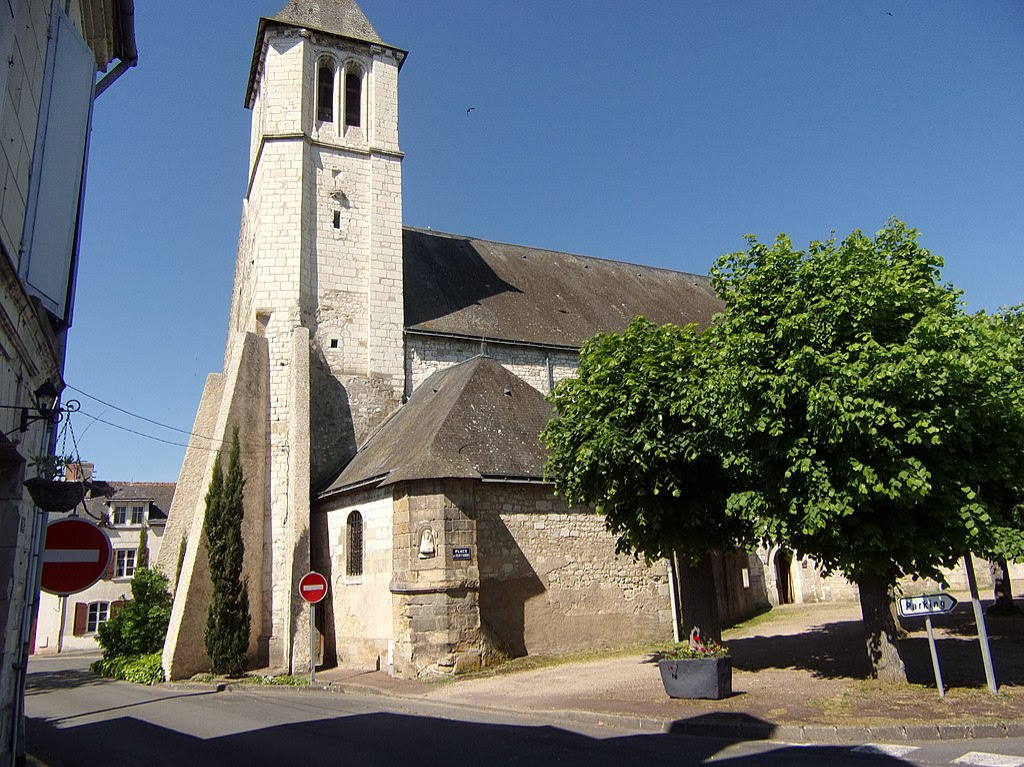Christian churches are under attack throughout Western Europe, with very recent examples from Austria, Germany, Italy and Sweden.
No Western nation, however, seems to experience as many attacks on its churches as France, once known as the «Eldest Daughter of the Church.»
Investigative journalist Amy Mek tweeted on July 1, 2023:
«Attacks on Churches are the norm in France; two Churches a day are vandalized — they are being burned, demolished, and abandoned, and their adherents are being sacrificed on the altar of political correctness. Priests are under constant threat. At what point will France’s open border politicians be held responsible?»
That last question inadvertently identifies the culprits — namely, migrants from the Muslim world, where attacks on churches are not abnormal.
In July 2023, for instance, Muslims attacked and desecrated several churches in France, by breaking the doors and windows of one church and spray-paintinganti-Jesus and pro-Muhammad graffiti on its walls. The men also torched at least two historic churches — a 16th century church in Drosnay, and the 12th centurySaint-Georges De La Haye-Descartes church — after general riots prompted by the June 27 police shooting of Nahel Merzouk, a Muslim criminal.
Not only did French authorities pretend that these two heritage churches simply «caught fire» — «probably due to a storm» — but they insisted that it was the police killing that prompted otherwise peaceful Muslims to riot at all.
If this was the case, what does one make of the fact that Muslims have been attacking churches in France for decades? Below is a recent sampling of attacks that occurred before the June 27 shooting of Merzouk:
June 26: Saint-Lazare church, which stands near another church that was heavily vandalized by Muslims on July 5, was desecrated and robbed.
June 20: A «gang of college students» stormed into the Saint Roch Church in Nice, mockingly doused themselves with holy water, and began shouting «Allahu akbar,» which, the report notes, is «regularly heard during Islamist attacks.» The first deputy mayor of Nice, Anthony Borré, responded in a letter to his apparently indifferent higher ups, urging them to take such matters seriously:
«Since October 29, 2020 and the Islamist attack on the Notre-Dame Basilica in our city [when another «Allahu akbar» yelling Muslim slaughtered two French women—one by beheading—and a man inside a church], you are not unaware of how traumatic it can be for our fellow citizens to hear such remarks within a church and the painful memories that they can revive. Faced with these attempts to destabilize society and with the attacks on our secular Republic, we must provide a strong and collective response.»
June 23: Three Muslims, aged between 12 and 13, barged into Saint Joseph Church in Nice, during an afternoon mass, and also began shouting «Allahu akbar.» Nice, it bears remembering, is also where another Muslim murdered 84 people in 2016.
June 12: After breaking into church property, a gang of Muslims — described only as a «group of young people» — savagely beat Fr. Joseph Eid of Notre-Dame-du-Liban parish and called him a «dirty Christian.» While fleeing intervening passersby, they spewed other «anti-Christian insults.»
Muslims also thrashed the 80-year-old Catholic priest of Saint Vincent de Paul in Saint-Étienne. After knocking Fr. Francis Palle to the ground, they continued beating and kicking the octogenarian, until he fell unconscious (last reported he was in critical condition). Although this attack occurred on June 30, three days after the police killing of Nahel Merzouk, the diocese said that it had nothing to do with the riots, but was, rather, standard fare.
June 3, The Church of Mailhac was heavily vandalized.
May 28: Several «unidentified» people broke into and vandalized the Saint-Laurent church in Cugnaux, which has a large Muslim presence: they defaced a crucifix, overturned candles onto the ground, and damaged icons — before setting the church aflame. A passerby, however, quickly intervened, including by calling the fire department which arrived swiftly and put out the flames. In response, Albert Sanchez, the mayor of Cugnaux, called for more «dialogue and understanding between the different religious and cultural communities of our city,» since «diversity is our strength and our pride.»
May 4: «Long live Islam,» as well as Arabic writing, were found spray-painted on the walls of a church in Lieusaint in Seine-et-Marne. The report adds that «This is not the first time this church has been vandalized… Several statues had been damaged and knocked over.»
March 16: A man, previously «on file for his Islamist radicalization,» stormed the Saint-Hippolyte Church in Paris and disrupted its service. He also stole the church’s six-foot-tall Plexiglas cross, which had supported a 400-year-old wooden Christ. It was later found nearby «smashed into many pieces,» said police.
March 8: A Muslim migrant entered into the Saint-Louis church cemetery in Évreux and proceeded to break off and desecrate the crucifixes affixed to some 30 graves.
March 2: A man described as of an «African type,» vandalized Saint-Eustache, one of the largest churches in Paris, in part by smashing the protective glass of an altar with a fire extinguisher. The report notes that «The suspect’s modus operandi … [is] comparable to that of the Saint-François-Xavier church [vandalism], where damage had been committed on Tuesday, February 28.»
While discussing these Paris church attacks, a March 17 report noted that a total of eight Parisian churches were vandalized or set on fire during the ten weeks between January and mid-March of 2023.
The above, as mentioned, are just a few examples: most attacks on churches in France are not even reported by local media. Investigative journalist Sonja Dahlmans offers more details:
«Crucifixes, organs, altars and other religious symbols are regularly destroyed or stolen [from the churches of France]. Statues of saints also suffer. In the church of Angers, seven statues of saints were beheaded or amputated in April this year. A statue of Mary was beheaded in the St. Martin’s Church in Choicy-le-Roi. Stained glass windows of old churches are also regularly smashed by vandals, such as in Guerlesquin. Extreme violence was used last October in the Saint-Joseph Chapel in Saint-Pol-de-Léon. There, vandals smashed the church doors with an ax and smashed all the church windows. All crucifixes and other religious symbols were destroyed by the perpetrators.
«Church cemeteries and graves cannot escape vandals. In Velsy, this involved damaging and robbing 150 graves in June 2022. The crosses on the graves and other religious symbols were taken or destroyed by the perpetrators. Eighteen graves of the church in Rocquemont were destroyed in May of the same year. A statue of Mary at the Guignicourt-sur-Vence cemetery was stolen in August 2022.»
It would seem that a full blown jihad has been declared on the churches of France, and the country’s leadership is looking the other way.
A map, published by Christianophobie.fr, which marks with a red pin every spot where a church in France was attacked between just 2017-2018, looks like a war zone. Virtually the entire map of France is covered in red. Even Snopes, which presents itself as the final arbiter on what is real or fake news, admitted the accuracy of the map, while trying to minimize its findings:
«While this image [the map] is often shared as if it shows all of the churches that were ‘destroyed’ in France, this map actually documents a wide range of nefarious activity, such as vandalism, theft, and arson, that occurred at both churches and cemeteries over an apparent span of two years (not four), covering 2017 and 2018.
«It should also be noted that while this map does document some relatively serious crimes, such as arson or the toppling of church statues, many of these pins correspond to graffiti-related incidents. We also found one pin related to a person’s simply interrupting a church service.»
In other words, according to Snopes, having jihadist, anti-Christian graffiti spray-painted on a church, or having a church service interrupted by a Muslim intruder screaming «Allahu akbar,» is not sufficiently «serious.»
One wonders if they would be so casual if a Christian vandalized a mosque, or broke into a mosque while screaming Christian slogans?
It should, incidentally, be unsurprising that the official mainstream response to the jihad on French churches is one of feigned ignorance, as captured by one somewhat surreal Newsweek title: «Catholic Churches Are Being Desecrated Across France—and Officials Don’t Know Why.»
While this report does a decent job of summarizing the «spate of attacks against Catholic churches» — including through «arson,» «vandalism,» and «desecration» — the words «Muslim,» «migrants,» or even «Islamists» appear nowhere in the report. Rather, «anarchist and feminist groups,» angry at churches because they are «a symbol of the patriarchy that needs to be dismantled,» are alluded to.
Meanwhile, even deductive reasoning makes clear that Muslims perpetrate the lion’s share of attacks on churches. Dahlmans reports:
«[A]ccording to a 2022 OSCE report, France is in the top five European countries with the most recorded anti-Christian hate crimes. The other countries in the top five are Spain, Germany, the United Kingdom and Sweden.»
There is something else that these top five nations have in common: significantly large Muslim populations. Put differently, while Poland, Hungary and other Eastern European nations have their share of «anarchist and feminist groups,» they have very few attacks on churches — and even fewer Muslims.
There are, of course, «practical» reasons why all of these Muslim attacks on French churches are massively obfuscated and dissembled. Imagine, for instance, how the tragic burning of the Notre Dame Cathedral in 2019 might be understood if it was common knowledge that countless churches in every corner of France have been and continue to be under constant attack, including through arson, by that nation’s significant Muslim population (hundreds of whom made it a point to gloat as Notre Dame went up in flames)?
Raymond Ibrahim, author of Defenders of the West, Sword and Scimitar,Crucified Again, and The Al Qaeda Reader, is the Distinguished Senior Shillman Fellow at the Gatestone Institute and the Judith Rosen Friedman Fellow at the Middle East Forum.






